

Though they don’t come around often, there are video games that changed the world. Whether they introduced gaming to the masses, brought revolutionary new gameplay or concepts to the medium, or were simply must-play titles, video games clearly aren’t a fringe hobby any longer. Desiring to experience these games for yourself makes a lot of sense, but deciding which ones are the best from the list of thousands can prove daunting.
Sure, you could use websites to find out which games are king, but today I’m here to give you personal recommendations about a specific genre. Perhaps you’re a new gamer, or maybe you’re not familiar with platforming games. No matter your situation, this list contains the absolute best platforming games for you to experience, spanning all the way from 1980s Nintendo Entertainment System classics to modern indie titles.
A few notes before we begin:
Nintendo’s second-party developer Rareware had smashing success with titles like Donkey Kong Country, GoldenEye 007, and Banjo-Kazooie. After showing an early build of Twelve Tales: Conker 64, another cutesy platform game starring Conker the Squirrel, Rare received flack from critics who felt that the game wasn’t different enough from their previous animal-centered titles like Diddy Kong Racing or Banjo. Because of this, they decided to radically overhaul the title.
What came about was Conker’s Bad Fur Day, an M-rated adventure featuring graphic violence, strong language, and gross-out humor, along with several film parodies. The game did poorly in sales due to its lack of marketing (Nintendo obviously wasn’t keen on the adult-oriented title) and the fact that it came at the end of the N64’s lifetime. However, Conker’s outing featured some of the best graphics on the system, a full and varied voice track, and a solid multiplayer mode.
Bad Fur Day makes the list for its sheer absurdity. What other platformer has you playing as an alcoholic squirrel who gets involved in a war, swims in poo water, and parodies The Matrix? The humor is all tied together by solid gameplay, good controls, and a variety of locales. Unlike the Banjo games, Conker doesn’t learn new abilities as he goes along, so the gameplay is more linear; a welcome change if you’ve played through Rare’s other masterpieces.
Any mature gamer should experience this cult hit; it’s one of the genre’s wackiest titles. If you can’t find the N64 version, a remake, Conker: Live & Reloaded, is available for Xbox. It’s largely the same as the original; major changes include updated graphics and heavy censorship criticized by fans (so it’s best to experience the original if you can).
As a general gaming guideline, licensed games (that is, those that are based on a movie, TV show, or other media) are almost always bad. They’re rushed to release alongside their movie counterparts and to release on multiple platforms. Quality is often overlooked in favor of rushing the game out the door. Not all licensed games are like this, though, and DuckTales stands as one of the best.
DuckTales casts you as Scrooge McDuck on his quest to become the richest duck in the world. You travel to five worlds to collect treasure and defeat bosses, followed by a final showdown. Like Mega Man, which the game borrows from quite a bit, the levels are non-linear and can be attempted in any order.
The biggest drawback of this game is that it’s short; if you’re a skilled player you can beat the game in just about two hours. While many NES titles were known for being insanely tough, DuckTales seemingly took into account the fact that children who liked the show would be playing the game, so it’s not among the hardest NES titles. However, it won’t let you off too easily, so don’t count it out!
DuckTales is lower on the list because it didn’t do anything particularly groundbreaking or astounding, but it’s still a blast to play to this day and is a testament that licensed games don’t have to be lousy. Scrooge’s cane-bouncing mechanic controls well, the music is top-notch, and the graphics are crisp. While the game lasts, it’s bliss. A remastered edition is also available, featuring a few new levels and areas, updated graphics and music, and full voice acting.
Ape Escape was the first game to take advantage of the PlayStation’s dual analog sticks, and the gameplay that it came up with using this control scheme was fantastic. Ape Escape has you controlling Spike, who must travel to different points in time to capture and stop monkeys who are being controlled by their leader, Specter.
Since the game required you to use Sony’s newer controller, the developers were able to build the entire experience around the mechanic. The game used an intuitive control scheme where the left stick moved your player, while the right stick was used for controlling the various gadgets. Different types of apes behaved differently, so you had to use some strategy to capture each one. Some even carried guns to defend themselves or binoculars so they could see you coming.
The game was an absolute blast to play; the dual-stick setup was much more than just a gimmick, and the variety of gadgets and monkey placements meant that capturing each one was a mini puzzle. It’s not one of the biggest platformers you hear about on the PlayStation, but it deserves to be played just the same. The PSP remake loses some of the magic due to its single control stick, so it’s best to play the original if you can.
Sly Cooper is a series that’s made its home on PlayStation consoles from the start, and Sly’s first outing is arguably the most enjoyable. You play as the titular raccoon, who comes from a long line of thieves. When his family’s book containing all of their secrets is stolen by the Fiendish Five, he embarks on a worldwide quest to get back what was taken from him.
Sly features attractive cel-shaded graphics, along with tight controls. The coolest gameplay elements revolve around stealth; as Sly recovers pages from the Thievius Raccoonus, he learns the moves of his family and you become even more deadly.
The controls are excellent and the game is a perfect fit for both children and adults. Like Ducktales, a big drawback is the game’s short length. While there are clue bottles to collect in each level for those who want to 100% the title, it only takes about 8 hours to finish the game completely.
Sly Cooper was a bit underrated and never became a must-have game, but its blend of stealth, fun locations, and cool gadgets are all elements of a successful platformer. If you’d like to check out all three of the raccoon’s original games, The Sly Collection bundles them all in HD; it’s also an easy platinum if you’re a Trophy hunter.
Wario debuted in Super Mario Land 2: 6 Golden Coins as the antagonist who wanted to take over Mario’s castle and land. He got his own series after that, with Wario Land: Super Mario Land 3 being the first game in the Wario Land series. Wario Land 3 was his most enjoyable adventure, as well as one of the finest titles to grace the GBC.
In Wario Land 3, Wario can’t take damage (he’s either pushed back and briefly stunned or transformed by enemy attacks), so finding the four treasures in each level is more about experimenting to find the correct path than getting frustrated on your way there.
Treasures that Wario finds can open up new paths on the map, grant him power-ups, or modify existing levels to open new areas (for example, a magic wand drains a swamp to allow access to the lower part of the level). This gives the game an open atmosphere, as you don’t have to attempt the levels in a specific order most of the time, and you’ll constantly be opening new places to explore.
With 100 treasures to collect (some of them optional and only available after you clear the final boss), challenging gameplay, great music, and eight special coins to collect in each level for completionists, Wario Land 3 is a perfect example of a portable platformer.
Downloadable Content (DLC) is a common way that game developers add more to their games these days; sometimes, it’s through crazy expansions. Before DLC was possible through online distribution, SEGA was one step ahead of their time with Sonic 3 & Knuckles, and it’s arguably the best choice of Sonic’s early games.
This one takes some explanation. In February 1994, SEGA released Sonic the Hedgehog 3, which is the best game of the original trilogy due to its more interactive levels, bosses after every stage, fantastic graphic backgrounds, and the ability to save the game (finally!). Then, in October 1994, Sonic & Knuckles debuted; the two titles were meant to be one game but were split up. However, Knuckles was a “Lock-On” cartridge, which allowed another Genesis game to be placed on top of it. When Sonic 3 was locked onto Knuckles, the two became Sonic 3 & Knuckles, a mega-game with additional features.
When played as one game, Sonic 3 & Knuckles featured small changes to the levels, the ability to play as Knuckles in 3 and as Tails in Knuckles, and the ability to collect all the Super Emeralds, which let the characters transform into their Hyper forms. For the most Sonic in one package, it’s the way to go. All of the series’ staples are present: hyper-fast levels, a variety of shields, and crazy bosses. Whether you were on Nintendo or SEGA’s side in the 16-bit wars of the 1990s, this is one Sonic game that must be played.
If you don’t want to bother tracking down the original games, the Sonic lock-on combo can be played in a multitude of collections that have been released since. These include Sonic Mega Collection (GCN), Mega Collection Plus (PS2, XB), and Sonic Classic Collection (NDS).
Like Sly Cooper, Rachet & Clank is another PlayStation core franchise. While the former focuses on stealth, Rachet is all about crazy guns and action-filled platforming. The series got its start with a beloved trilogy on PS2, but A Crack in Time is the high point of the series.
Crack makes the list instead of one of the PS2 titles because of its balance. Platforming, insane weapons, minigames, hidden secrets, and humor are all sprinkled perfectly throughout this title. In addition, it finally features portions of the game where you play as Clank, which are puzzle-oriented and based around the flow of time. It’s accessible for children, but packs plenty of depth for older gamers, as well.
Rachet & Clank has always been a series that’s all about the player having fun. There’s something about blasting through space to different planets on an adventure, all the while destroying robots with a ridiculous arsenal and laughing at the game’s zany characters and jokes. The gameplay is varied; one moment you’ll be in Clank’s sections focused on slowing down and thinking through puzzle elements, and the next you’ll be in an arena as Rachet fighting tough enemies for a prize. Truly, any fan of video games needs to play a Rachet & Clank title, and A Crack In Time is the finest.
Crash Bandicoot, like many other franchises, got his start with a PS1 trilogy of platformers. Unfortunately, Crash has gone far downhill in his later games, but that doesn’t mean you should miss the original masterpieces.
The first Crash game was rough around the edges, and its sequel improved on it vastly, but the third title stands as king. This game is linear 3D platforming at its best, complete with some of the best visuals on the PlayStation, a great voice track, fun level design, tons of goofy death animations for Crash, and secret levels to find. The game can be finished simply by completing each level and collecting its crystal, but getting 100% takes finding all the gems, as well as collecting relics in time trials, which are actually enjoyable unlike most shoehorned speed runs.
Crash learns new moves as you progress that come into play in later levels, such as a double-jump and tornado spin. Each level features different gameplay elements that aren’t found in others, such as a pyramid where the water level rises and falls (Crash can’t swim) or a dark jungle where you’re guided by a firefly. Crash’s sister, CoCo, is also playable. Her levels add more variety, as you jet-ski in the ocean and even ride a baby tiger on the Great Wall of China.
Crash 3 holds up to this day, and with fun levels, plenty to do besides just finishing the game, and a level of charm and detail unmatched on the PlayStation, it takes a well-deserved spot on this list.
Another big franchise for Sony’s early consoles, Spyro tells the tale of a purple dragon who uses his fiery breath, speedy charge, and other moves to save the Dragon Realm whenever evil rears its ugly head. The third title wasn’t radically different from its predecessors, but like Crash, perfected the formula before Spyro lost its original developers.
While Crash‘s gameplay takes place in 3D linear levels, Spyro‘s worlds are a bit more open, and are connected by a hub world. In Year of the Dragon Spyro must collect baby dragon eggs that were stolen by Bianca. This game also introduced alternate playable characters, such as Sheila the Kangaroo, who can double jump. Certain sections of the game require you to play as Spyro’s friends to access areas the dragon can’t reach. This leads to the third game having more varied gameplay, as it’s not just a sequel where Spyro learns yet more moves.
Spyro 3 also features a ton of side minigames, such as skateboarding and puzzles. All of this adds up to a blast of a gameplay experience. Don’t let the kid-friendly packing fool you; this game is just-right for any gamer. The developers even implemented a scalable difficulty feature which automatically adjusts how hard the game is based on your skill. Spyro was never the same after Year of the Dragon, and it still stands today as one of the best platformers on the PlayStation.
If you’ve heard about platformers at all, you’ve heard of Mega Man 2. After limited success with the first title, Capcom came back and produced the smash hit that came to define action platforming for years to come.
Mega Man allows you to tackle its levels and Robot Masters in any order you like. Each time you defeat one, you take a new ability from him, which will prove helpful on other stages. Strategy then comes into play, since some boss weapons can make quick work of other bosses.
Mega Man 2 is the series’ high point, and NES platforming at its best. Tight controls, a password system so you don’t have to do it all in one try, and reduced difficulty from the ridiculous original all made Mega Man 2 a smash hit. The music is also some of the most cherished on the system.
Mega Man 2 was a must-have title on the NES and it’s still a must-have title today. The game set the tone for all future Mega Man titles and if you only play one game in the series, make it this one. It’s also available on iOS, if that’s your only option. Note that there is a Game Boy title, Mega Man II, that is different than the NES version.
LittleBigPlanet (LBP) as a series has a simple tagline that sums it up perfectly: “Play, Create, Share.” The first game, a smash success, gave players the ability to play through the story mode and unlock all sorts of items, materials, and stickers, and use them to create their own levels. Once a stage has been made, it can be uploaded to LBP‘s servers for all to enjoy. The second game, LBP2, refined this formula and took the series from being a platform game to “a platform for games.”
LittleBigPlanet 2 makes the list over its predecessor or sequel because it’s the best representation of what makes the series great. Once you’ve played through the excellent story mode (which features tons of collectibles and challenges), the fun is just beginning, because a robust level editor lets you create entire games, if you wish. The LBP community is astounding; many of their cleverly improvised solutions from the first game, such as logic gates, were worked into the sequel by the developers. If you have the time and determination to make your own levels, you’ll find an extremely rewarding experience with LittleBigPlanet 2.
However, even if you don’t want to set foot in the level editor, you’ll find millions of levels published online by other players for you to enjoy. All of the content uploaded from the first title, plus the all-new stages that LBP2‘s greater customization makes possible, is available to explore. Obviously not every user-created stage is a smash hit, but there are plenty that are truly remarkable. For being so accessible to creators and featuring tons of ready-made content in story mode, LBP2 is a platformer fan’s paradise.
FEZ, one of the best downloadable games of 2012, has a lot of politics attached to it due to creator Phil Fish’s various controversies. Let’s forget about all that for now and enjoy the game that he created.
The game tells the story of Gomez, who lives in a 2D world and discovers that it’s actually 3D. This leads to a unique gameplay mechanic in which the player uses the shoulder buttons to spin the world around. If a platform appears out of reach from your current position, rotating the world 90 degrees might make it reachable. Of course, this mechanic is used and built upon during the entire game.
Many staples of NES games beyond just the pixelated graphics are present in FEZ. Clues aren’t given explicitly, so it’s up to the player to read between the lines and figure out what the game is telling them. The game plays like a big open garden ripe for exploring, similar to the original Zelda. Thankfully, a helpful map helps you keep track of where you’ve been and what areas still contain secrets to find.
FEZ is a tough game. Most players will be able to collect enough cubes to see the ending, but after you finish the game, you unlock a first-person mode, adding even more complexity to the postgame. Those who love a challenge and solving puzzles with NES difficulty will be right at home, as some of the deepest secrets are downright cryptic. For casual gamers, though, simply seeing the credits is probably enough.
FEZ gives you almost nothing and allows you to explore to your heart’s content and discover the game for yourself. For that, it manages to capture the magic many gamers remember experiencing on the NES and other early consoles; a difficult feat in today’s tutorial-heavy games. With attractive graphics, peaceful music, and the aforementioned gameplay, FEZ has cemented itself as one of the best indie releases ever.
Rayman’s first adventure was a 2D platformer, but his later titles took a turn to 3D. 2011’s Rayman Origins brought the limbless hero back to his 2D roots with a bang, and the sequel, Rayman Legends, is even better.
Legends is simply a joy. It can be played with up to 4 players in the same vein as the New Super Mario Bros. series, but this can quickly become chaotic, so if you’re looking to fully enjoy the game and uncover all the content it’s best to go it alone. The game’s graphics look like concept art come to life, and the music is similarly enchanting; even syncing up with the action.
The game is more than looks. The levels gradually increase in difficulty like any good platformer, and there’s tons of rewards being thrown your way for completing levels and collecting Lums (the game’s coins). Nearly half of the levels from Origins are remastered and fully playable, you’ll get to play music-themed levels in which you must follow the beat of popular songs to stay alive, and there’s a daily online challenge in which you can compete.
As it’s available on nearly any platform, including PS4 and XBO versions that take advantage of the new hardware, Rayman Legends is an overlooked gem that’s a must-play for platformer fans. With plenty to unlock, solid and varied level design, and stunning visuals, you’ll be longing for more Rayman before it’s done.
Braid is one of the first modern indie games to hit the scene in a big way. It’s a tiny game that’s big on fun, and turns the platform genre on its head.
In Braid, you play as Tim, a man who is trying to make amends with a princess he once knew. You’re able to manipulate time; as such, you cannot die. Anytime you make a mistake, you simply need to hold a button to reverse the flow of time and undo it.
As the game progresses, new mechanics are introduced, such as objects that are immune to time reversal, or levels where your left-to-right movements move time itself.
Braid is a game that you must play without using any guides or outside help; as such, you won’t find any gameplay videos here. Some of the puzzles will seem impossible, but when you figure them out, you’ll shout with delight! The ending and suggestions that the game makes between the lines are still being discussed to this day.
Other games may have done the time-reversal mechanic before, but Braid pulls it off in a way that’s so intuitive that it will feel completely new. Braid is one of the finest puzzle platformers of all time, and the magic in its gameplay simply must be experienced for yourself.
In Super Meat Boy, you control Meat Boy on a quest to save his girlfriend. The road to rescue her will be long and hazardous, however. Super Meat Boy contains over 300 levels full of blades, spikes, and pits ready to end your quest.
Super Meat Boy is one of the most difficult games on this list. The Light World levels are all are required to finish the game, and with enough patience most competent games will see the end. However, the alternative Dark World contains some of the toughest modern levels in gaming; as alterations of their Light counterparts, they feature blades where you’d once find a safe spot to hide, for example.
The beauty of Meat Boy is that you never feel like the game is at fault for your deaths. The fine-tuned controls give you full power over what Meat Boy is doing and so you’re sure of your mess-ups. Instant restart times also mean that death isn’t too stiff a penalty; when you’re able to try again in a split-second you won’t be too upset over the loss.
Fans of challenge will be right at home with Super Meat Boy, as it contains plenty of alternate levels and extras to collect. Even if you don’t consider yourself good enough to take a swing at this game, you can appreciate it as having difficulty that comes from good design, not from being cheap. Many games are difficult just to be annoying or poke fun at the player, but Super Meat Boy respects your time and is a worthy challenge for advanced players.
The most recent game on our list, Shovel Knight comes from independent developer Yacht Club Games, comprised of former WayForward (who developed Contra 4, Mighty Switch Force!, and the Shantae series) employees. In an era where it’s trendy to create 8-bit games to appeal to nostalgia, Shovel Knight forgoes the formalities and gives an authentic experience that could have been at home on the NES.
Shovel Knight plays like a hybrid of so many beloved titles (don’t misunderstand: this game stands on its own and is not a parody-ridden throwback like Retro City Rampage DX). The world map system of Super Mario Bros. 3, combined with the pogo-stick ability in DuckTales meets the towns of Zelda II and the gaining of new abilities in Mega Man, but it all feels fresh and new. The retro graphics are sharp and attractive, the story is told through gameplay instead of endless cutscenes, and the game takes itself just seriously enough.
It’s impossible to say enough about this game. Shovel Knight only lasts around five hours, but the gameplay you get while enjoying it is magnificent. The difficulty is perfectly balanced, but tweaks are up to you; if you destroy a checkpoint, you earn treasure but won’t be able to start there if you die. The level design is near-perfect and begs to be explored for secrets.
The music, done by well-known chiptune composer Jake “virt” Kaufman, is top-notch and makes you feel as if you’re playing on an NES. Shovel Knight is one of the rare games that makes you want to play it again as soon as the credits roll, and with a New Game Plus mode featuring fewer checkpoints and more deadly enemies, fans of a challenge will have a fantastic second round.
Everyone who has touched a controller in their life should play Shovel Knight. With Kickstarter stretch goals coming later, including a Challenge Mode, playable Boss Knights, and versions for PlayStation platforms (featuring Kratos from God of War coming in 2015), Shovel Knight is only going to get better. Play this game as soon as you can.
Super Mario 64 is the game that defined what 3D platforming was to be for the rest of time. Up until this title, the Mario series was always 2D. Other series didn’t make the transition nearly as smoothly, such as Bubsy. With the release of stinker Bubsy 3D on the PlayStation, which came just a month after Mario 64, it became evident that bringing a 2D platformer into three dimensions isn’t easy; Bubsy 3D is widely considered to be one of the worst games ever and caused the series to screech to a halt.
While Mario’s previous adventures focus on reaching the end of the level to advance, Mario 64 has Mario returning multiple times large levels to earn stars. Each level has multiple objectives for its stars, and different missions might even take you to previously inaccessible areas of the stage. The open feel was new to Mario games, but it didn’t abandon everything that made the plumber so much fun in 2D. Mario still collects coins to earn extra lives, jumps on enemies’ heads to defeat them, and uses power-ups (like the famous wing hat) to get around easily.
Super Mario 64 squeezes a ton of gameplay into an N64 cartridge, especially for the time, but it still holds up today. Seeing classic Nintendo characters in full 3D for the first time was astounding, and the music is classic, featuring some re-imagined Mario tunes alongside new tracks.
The only part of the game that doesn’t hold up well is the camera; as 3D movement was still a novel idea, fighting with the camera is common in the game and you’ll have to deal with some issues there. Other than that, though, Super Mario 64, like Metroid Prime and others, is a massive achievement and shows that hallmarks of a series can transition with a perspective change. Mario 64 is the best-selling N64 title for a reason, and still holds magic for platformer fans.
If you can’t get a copy of the original, a modified remake, Super Mario 64 DS, is also available. Major changes include three additional playable characters with their own abilities (Yoshi, Luigi, and Wario), a map on the lower screen, and additional stars to collect. Overall, it’s a decent version, but the controls (which use the touch screen) aren’t great, which can be a deal-breaker in a game that requires precise movements.
Banjo-Kazooie is one of Rare’s best-known games and is often compared to (and called a clone of) Super Mario 64. However, calling it a rip-off of Mario’s monumental title is not only untrue, it’s unfair to Banjo.
While Banjo and Mario 64 are both 3D platformers, they have different focuses. Mario 64 is focused on objectives and platforming, and Banjo is more about exploring and collecting. Games like Banjo-Kazooie are commonly referred to as “Collect-a-Thons,” where dozens of different objects must be collected in every level. While this can be a negative term, if done right the game ends up being awesome, and Rare’s masterpiece is an example of this.
What makes Banjo so magical are its worlds. Each one is inhabited by all kinds of zany creatures who need help and have something to offer in return. You’ll find Gobi the camel who’s captive in his own land, Clanker the robotic garbage disposal, and deadly snowmen who must be smacked on their hats to defeat them. The game has so much life, and the worlds are filled with secrets and collectibles.
The entire world of Banjo-Kazooie unfolds sort of like a twisted fairytale. Gruntilda the witch steals Banjo’s sister Tooty, but some comedy is thrown into the mix since Grunty speaks only in rhymes and mocks Banjo and Kazooie throughout their adventure. There are some neat elements that aren’t seen in many other games, such as the board game before the final boss, Grunty’s Furnace Fun. In it, you have to navigate a board full of questions about the game (such as what item makes a certain sound or what world does this picture show), so it wants you to pay attention to the worlds it has delicately crafted.
The music, composed by Grant Kirkhope, is some of the best ever in a video game. In each world, the main track crossfades; the same tune persists, but it changes as you approach different areas, such as the worlds in Gruntilda’s Lair. Each tune is catchy as anything and will have you humming it for days. It makes a great ringtone!
With immersive worlds, tons of jokes, fun characters, astounding music, plenty to collect, gameplay focused on exploration, and even an unfinished secret hidden in the game (the infamous Stop ‘n’ Swop, where owners of Banjo and its sequel, Banjo-Tooie, would be able to unlock secret items), Banjo-Kazooie is the pinnacle of 3D platforming and its magic has persisted through time. An X360 version, with updated graphics, achievements and leaderboards, removal of Nintendo logos, implementation of Stop ‘n’ Swop, and a few gameplay changes, is available if you prefer.
The first Donkey Kong Country (DKC) was a smash success, showcasing jaw-dropping graphics in a 2D platformer and bringing Donkey Kong’s character back into Nintendo’s lineup. The second game, however, is quite possibly the best sequel of all time. Everything that DKC had, DKC 2 had more of. The music was hauntingly atmospheric (David Wise’s soundtrack for this game is widely considered to be among the best of all time), the graphics were sharper, the secrets were made much clearer, and the level design made you practically feel as if the developers were watching you discover their world with glee.
Donkey Kong Country 2 contains everything that’s great about a platformer. Diddy and Dixie are just different enough that different situations demand each character, while the animal pals you can find in certain levels feel integral to the experience instead of just allowing you to romp through the level like in the first game. There are more hints showing you where to look for secrets, and in the later levels you’ll get so used to the way the worlds are designed that you’ll know where to look on your own.
An alternate ending is available for players who want 100% completion; after you collect enough special coins and pass some extra-tough stages, you face off against Kaptain K. Rool again for the true battle. The difficulty of the game is just right; it’s not a cakewalk by any means, but persistence pays off and you’ll feel like a better player by the later levels.
The second DK Country game is the pinnacle of the series and simply a delight. The tight controls, unparalleled level design, legendary music, and perfect pacing all come together to make a platformer that hasn’t met a worthy match. This game is the definition of what a sequel should be: take everything about what made the first game great and amplify it, cut out the stuff that wasn’t fun, and make the new game stand on its own.
The game was remade for Game Boy Advance with some changes (inferior to the original), and it’s also available on Virtual Console in Europe and Japan. For unknown reasons, the DKC trilogy has been removed from the US Virtual Console, so you’ll have to stick to the SNES version if you’re stateside.
Every once in a while, a game comes along that does everything right. Anyone who bought a Super Nintendo near launch received Super Mario World as a pack-in title and quickly found that they were playing one of those games.
Only one 2D Mario game could make this list, and as amazing as Super Mario Bros. 3 is, Super Mario World is the best Mario game ever created and the greatest platformer of all time. So many elements introduced in earlier games were present in World, and it introduced plenty that later titles would follow. The world map was colorful and featured tons of alternate exits that led you around the world’s levels in all different ways. This game was also responsible for introducing Yoshi, who changed the gameplay with his eating ability and gained different skills based on his color.
Mario got new transformations, including the famous cape. The music is timeless, and the cartoon graphics bring Dinosaur Island to life in a way no previous game in the series could. The sheer content in the game makes it highly replayable, and even for those who finished the title when it was originally released, Mario’s 16-bit adventure holds great fun the second time around. The difficulty is accessible to all, and there’s even a secret bonus world for those who want to see everything.
In all, Super Mario World was one of the biggest smash hits on the SNES, and is still just as playable, enjoyable, and amazing today as it was in 1990. Mario hasn’t had a finer adventure since, and if you haven’t enjoyed this masterpiece, it’s the game to play for anyone looking to understand why Mario is the undisputed king of the platformer.
Now that you’ve read my (long) list of the 20 best platformer games, I want to hear what you think! Certainly there are many other titles that could have made this list, especially in the Mario series. Perhaps you believe another Sonic game is better than the one I chose, or maybe you don’t think my love of Rareware is grounded in reality?
I’d love for you to weigh in! Let’s talk about memories you have of these games, titles that should have been on the list, or even games you don’t think deserve to be here. If you’re a new gamer and plan on experiencing some of these legends for the first time, I’d love to hear from you too!

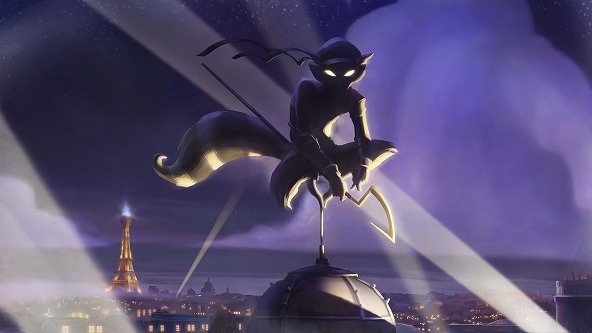
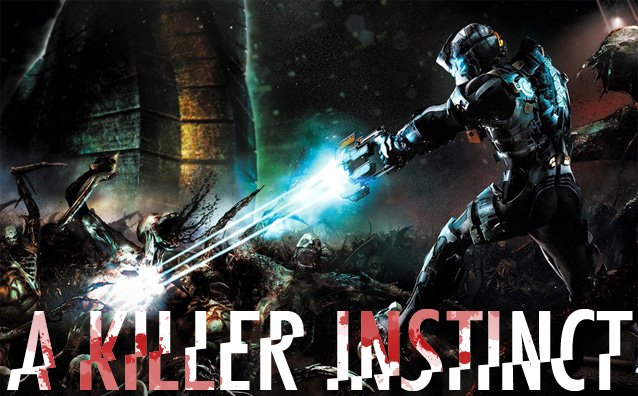
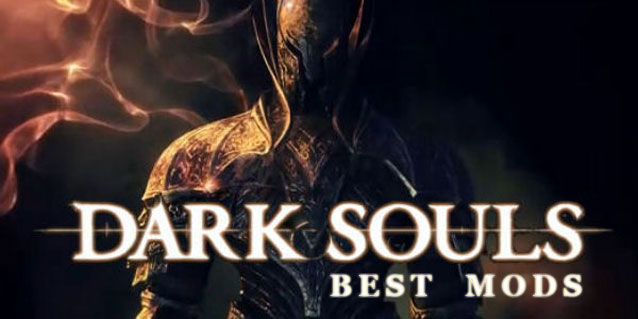
 3 Ways To Stream Video Games From Your PC To Your Main TV
3 Ways To Stream Video Games From Your PC To Your Main TV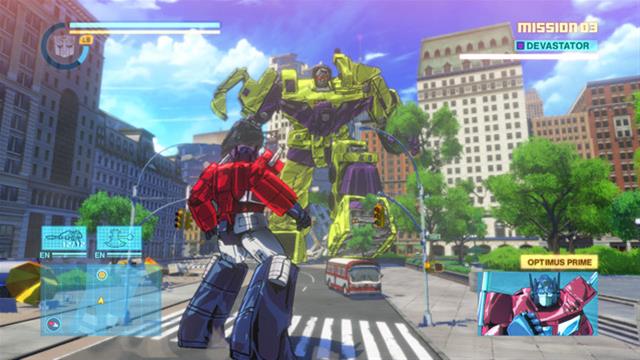 Transformers Devastation - Autobots Character Strategies
Transformers Devastation - Autobots Character Strategies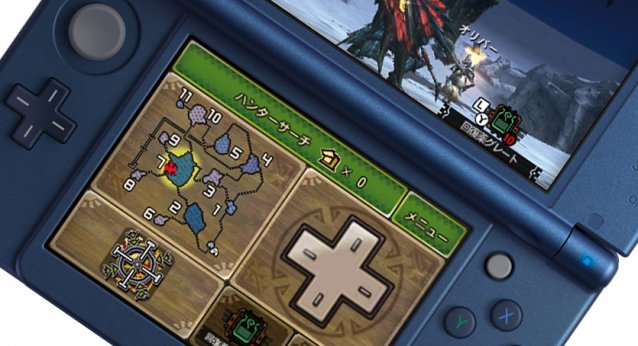 Why The New 3DS Could Mean Old Problems for Nintendo
Why The New 3DS Could Mean Old Problems for Nintendo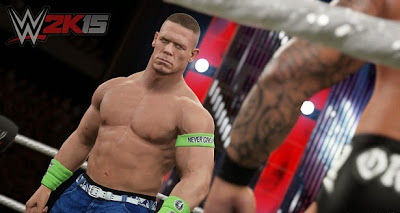 WWE 2K15 (PS4) All Unlockable Wrestlers (Roster)
WWE 2K15 (PS4) All Unlockable Wrestlers (Roster)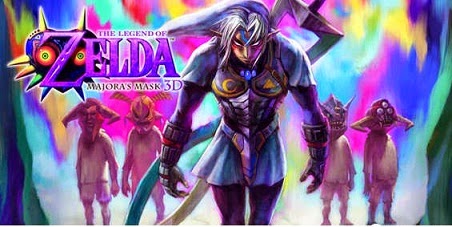 Majoras Mask 3D useful tips, guide
Majoras Mask 3D useful tips, guide